Istanbul's Enchanting Landmarks Adventure
Join us for a captivating free walking tour through Istanbul's iconic landmarks, where history and culture come alive at every turn.
Time
3 Hours
Stops
9 Places
Distance
4.3 km
Hagia Sophia
Begin your exploration at the iconic Hagia Sophia, a historic architectural marvel that has served as a cathedral, mosque, and now a museum, showcasing Istanbul's diverse cultural heritage.
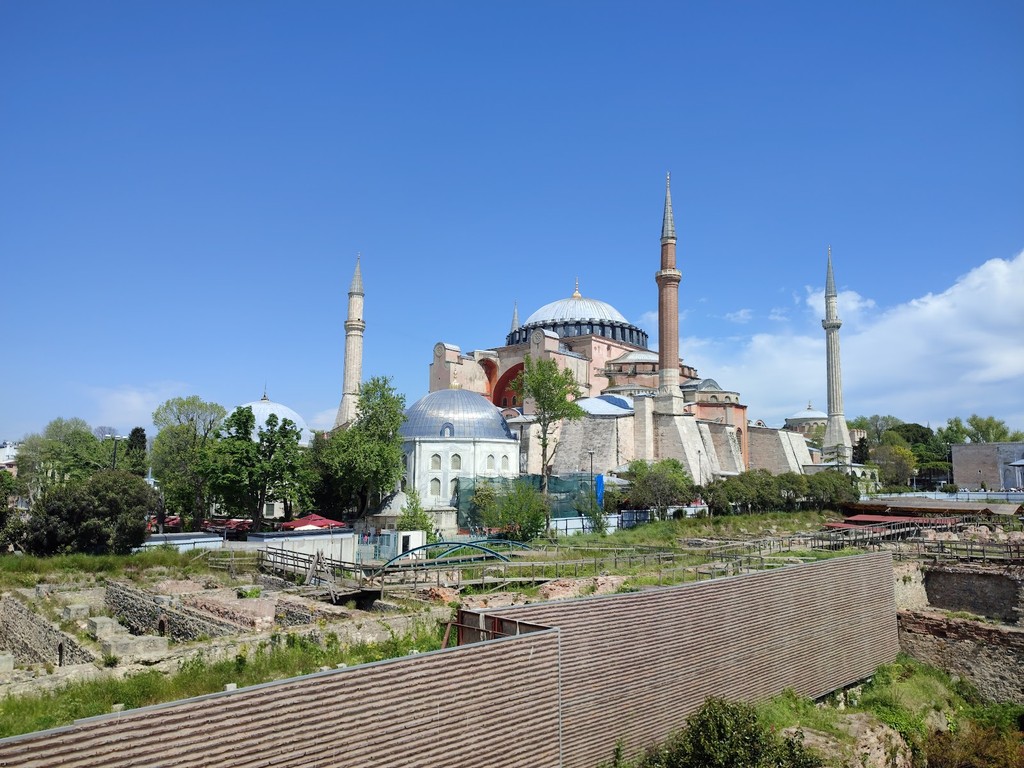
Hagia Sophia (Source: Google Maps)
Hagia Sophia, originally constructed as a cathedral in 537 AD, is an architectural masterpiece that showcases the ingenuity of Byzantine engineers. For nearly a thousand years, it served as the largest cathedral in the world, symbolizing the power of the Byzantine Empire. Following the Ottoman conquest of Constantinople in 1453, it was converted into a mosque, adding minarets and other Islamic features. In 1935, it was transformed into a museum, reflecting Turkey's secular identity. The building's grand dome, adorned with mosaics, and its intricate marble pillars draw millions of visitors each year, making it a UNESCO World Heritage Site and a true symbol of Istanbul's rich cultural tapestry.
Basilica Cistern
Venture underground to the Basilica Cistern, an ancient Roman water reservoir known for its atmospheric columns and eerie beauty, offering a glimpse into the city's Byzantine past.
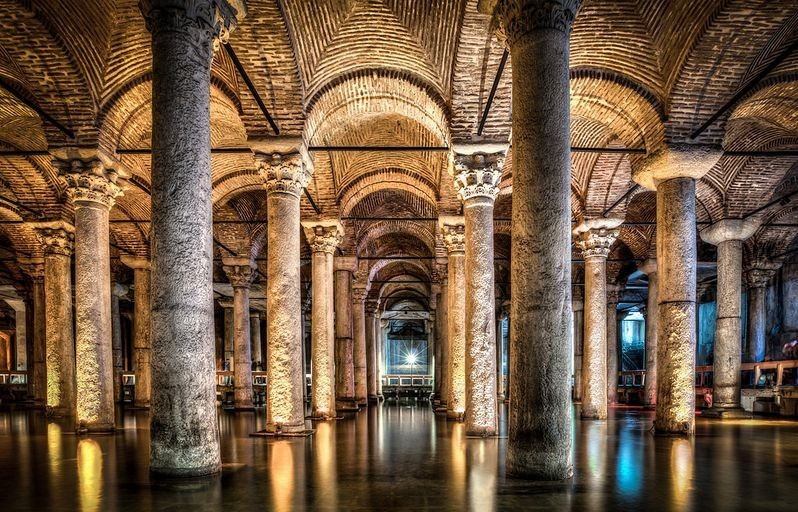
Basilica Cistern (Source: Google Maps)
The Basilica Cistern, built in the 6th century during the reign of Emperor Justinian I, is an extraordinary feat of engineering. This ancient underground water reservoir, capable of holding up to 80,000 cubic meters of water, was used to supply water to the Great Palace of Constantinople. The cistern is renowned for its 336 columns, many of which are intricately carved and reflect the artistic skills of the Byzantine era. Visitors are often captivated by the atmospheric lighting and the eerie beauty of the water, which is home to fish swimming among the ancient columns. The Medusa heads, used as column bases, add an air of mystery, making the Basilica Cistern a must-see for those interested in Istanbul's Byzantine past.
Blue Mosque (Sultan Ahmed Mosque)
Just a short walk from Hagia Sophia, the stunning Blue Mosque is renowned for its beautiful blue tiles and six minarets, standing as a testament to Istanbul's rich Islamic history.
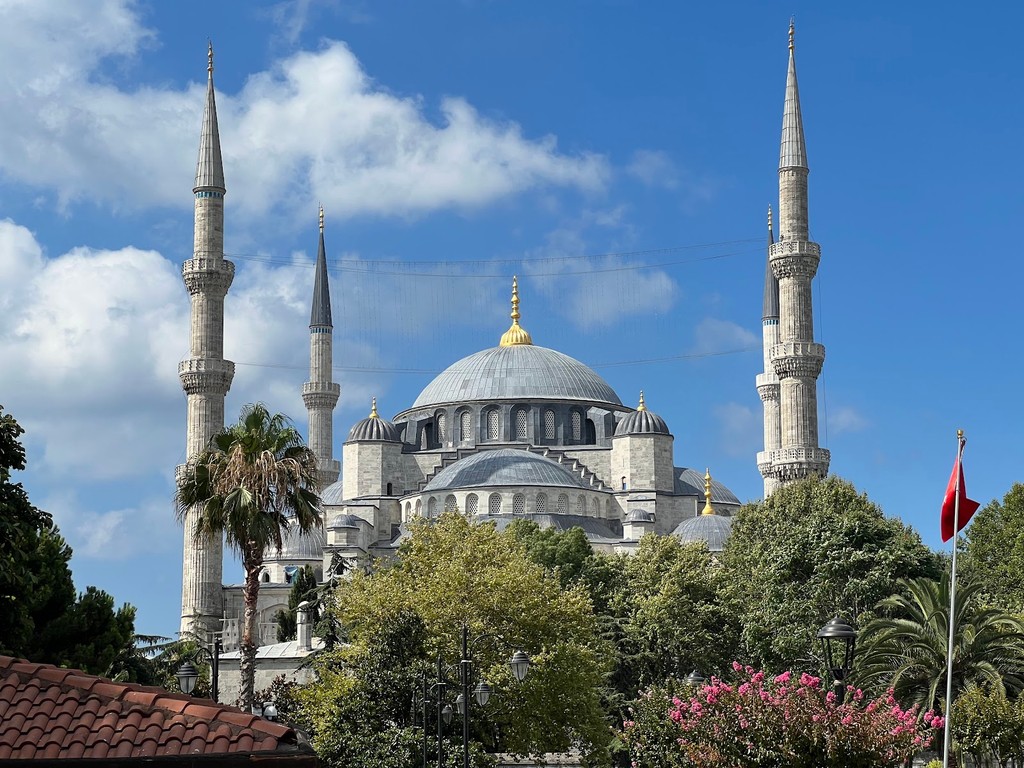
Blue Mosque (Sultan Ahmed Mosque) (Source: Google Maps)
The Blue Mosque, officially known as the Sultan Ahmed Mosque, was commissioned by Sultan Ahmed I in the early 17th century. It is famous for its stunning blue tiles that adorn its interior, giving the mosque its nickname. The mosque features a grand scale with six minarets, a rarity for mosques of its time, which originally caused controversy but has since become a symbol of its architectural significance. The harmonious blend of Byzantine and Islamic architectural styles is evident in its vast prayer hall and intricate calligraphy. The mosque remains an active place of worship, welcoming millions of visitors each year who come to admire its beauty and learn about its historical importance in Istanbul's Islamic heritage.
Topkapi Palace
Continue to Topkapi Palace, the opulent residence of Ottoman sultans for centuries, where you can explore its lavish rooms and courtyards filled with historical treasures.
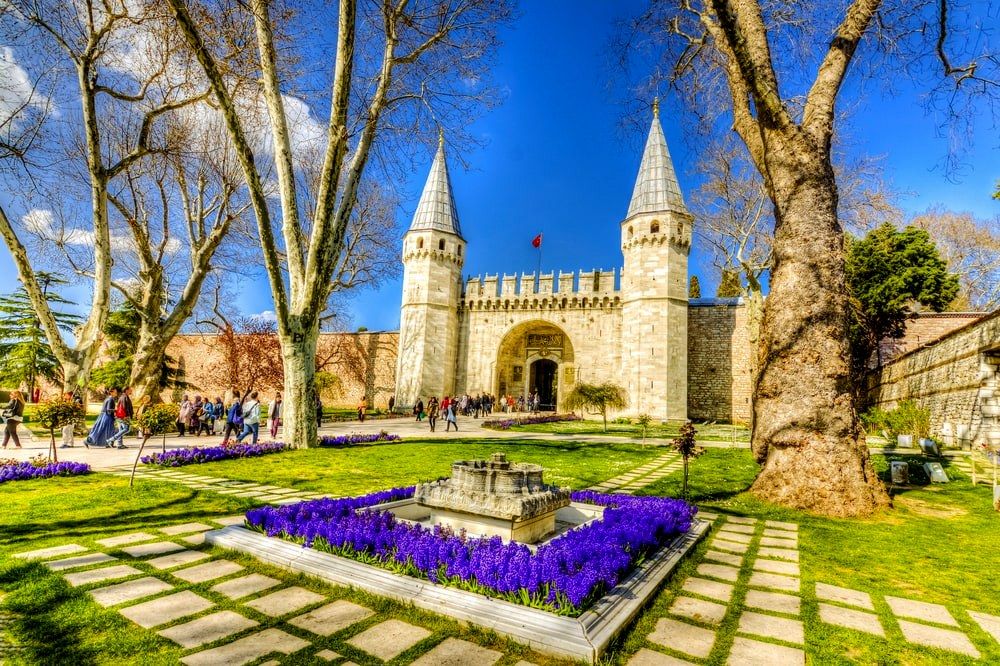
Topkapi Palace (Source: Google Maps)
Topkapi Palace served as the primary residence of the Ottoman sultans for over 400 years, from the 15th to the 19th century. This sprawling complex includes stunning courtyards, opulent rooms, and exquisite gardens that reflect the grandeur of the Ottoman Empire. Visitors can explore the Harem, where the sultan's family lived, and the Imperial Treasury, which houses an impressive collection of jewels and artifacts. The palace's architecture showcases a blend of Islamic and Byzantine influences, with intricate tile work and calligraphy. As a UNESCO World Heritage Site, Topkapi Palace offers a fascinating glimpse into the lives of the sultans and the rich history of the Ottoman Empire.
Istanbul Archaeological Museums
Discover the Istanbul Archaeological Museums, a complex of three museums housing an impressive collection of artifacts from various eras of Istanbul's history.
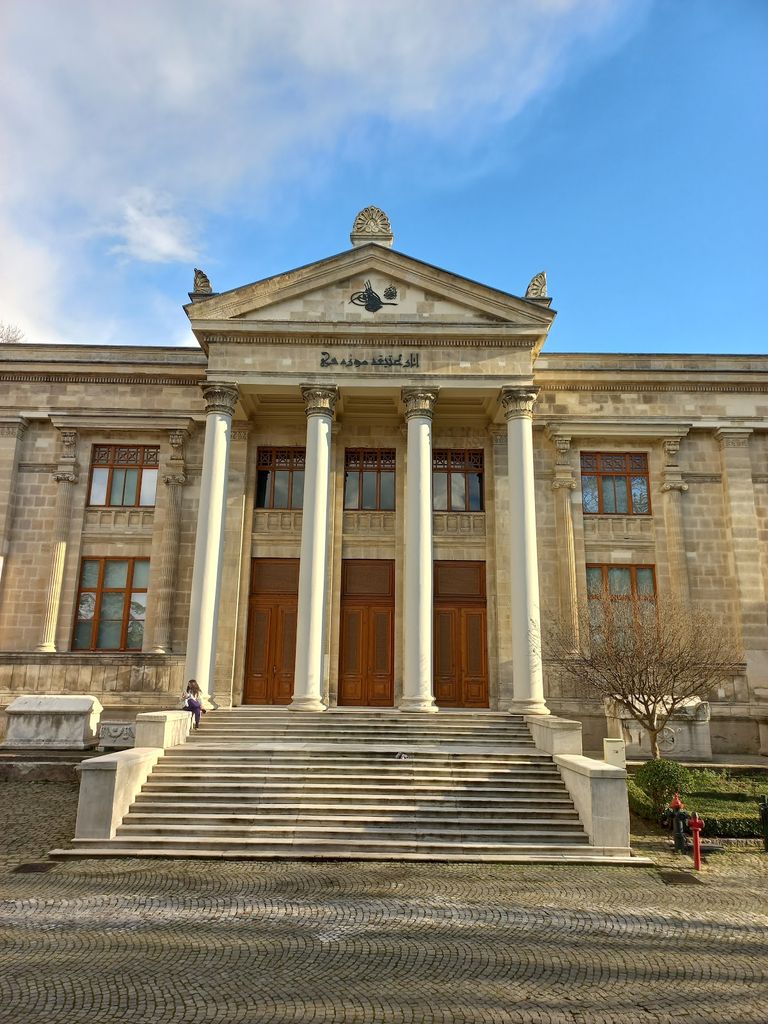
Istanbul Archaeological Museums (Source: Google Maps)
The Istanbul Archaeological Museums comprise a complex of three museums that house one of the world's richest collections of artifacts from various civilizations. Established in the 19th century, the museum complex includes the Archaeological Museum, the Museum of the Ancient Orient, and the Islamic Art Museum. Visitors can explore thousands of artifacts, including the famed Alexander Sarcophagus and ancient relics from Mesopotamia, Egypt, and the Byzantine Empire. The museums not only highlight the archaeological significance of Istanbul but also its role as a crossroads of cultures throughout history. With a collection that spans over 5,000 years, the Istanbul Archaeological Museums are essential for those interested in the city's diverse heritage.
Gülhane Park
Take a leisurely stroll through Gülhane Park, a serene green space that offers a refreshing break and a chance to enjoy nature amidst the bustling city.
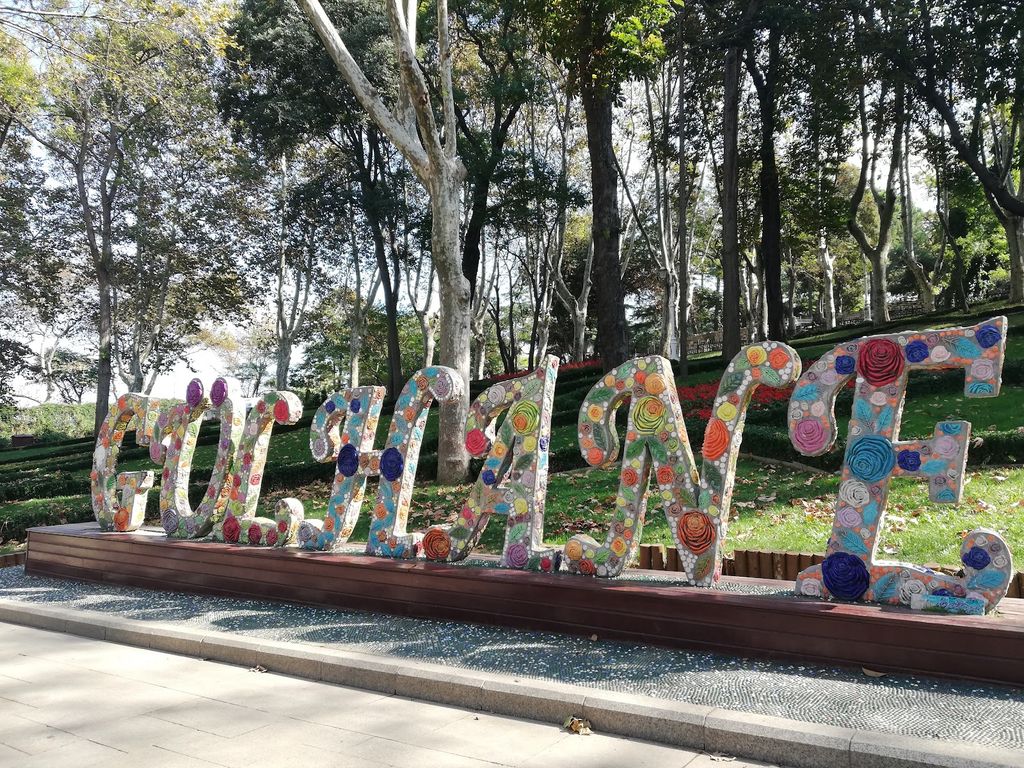
Gülhane Park (Source: Google Maps)
Gülhane Park, once part of Topkapi Palace, is a historical park that offers a serene escape in the heart of Istanbul. Its name translates to 'Rose House,' and it is known for its beautiful gardens, walking paths, and scenic views of the Bosphorus. The park has a rich history, dating back to the Ottoman era when it served as a royal garden. Today, it is a public park that welcomes locals and tourists alike, providing a refreshing break from the bustling city. Visitors can enjoy picnics, stroll among the blooming flowers, or relax under the shade of ancient trees. Gülhane Park also hosts cultural events and exhibitions, making it a vibrant part of Istanbul's urban landscape.
Spice Bazaar (Egyptian Bazaar)
Immerse yourself in the vibrant colors and scents of the Spice Bazaar, where you can experience the lively atmosphere and explore a variety of spices, sweets, and local products.
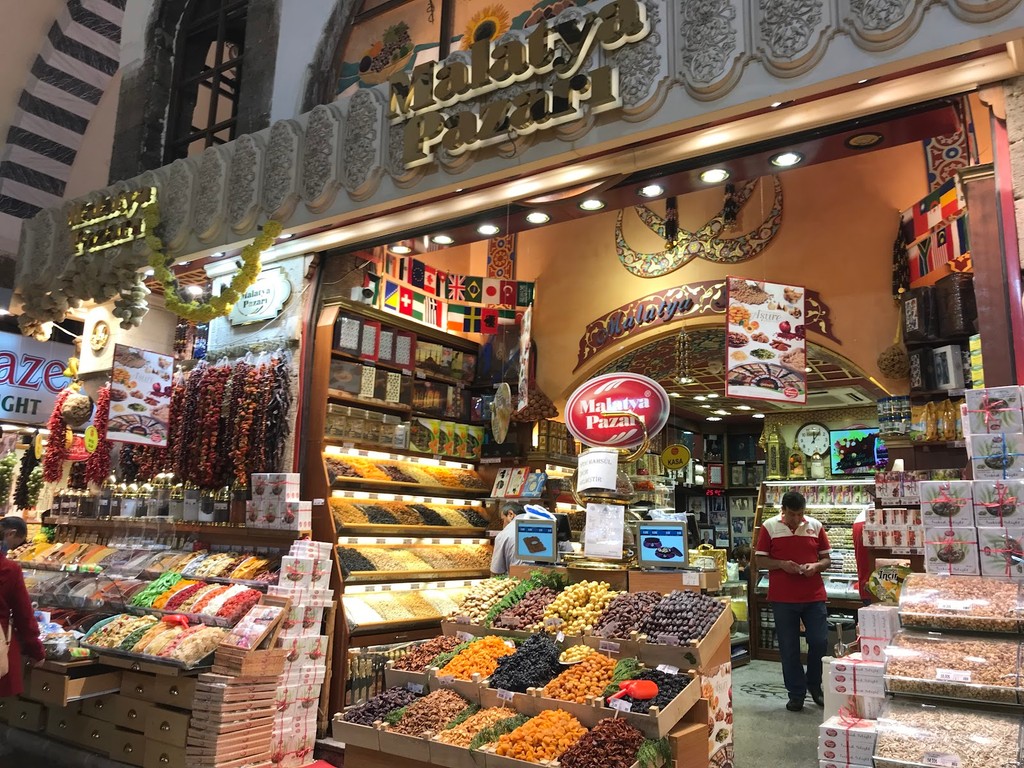
Spice Bazaar (Egyptian Bazaar) (Source: Google Maps)
The Spice Bazaar, also known as the Egyptian Bazaar, is one of Istanbul's oldest and most vibrant markets. Established in the 17th century, it was originally built to provide a place for merchants to sell spices, herbs, and other goods imported from the East. Today, it remains a bustling hub where visitors can experience the rich aromas and colors of spices, sweets, and local delicacies. The bazaar's architecture features stunning domes and arches, creating an inviting atmosphere for shoppers. As you wander through the narrow aisles, you'll find stalls filled with everything from saffron and sumac to Turkish delight and dried fruits. The Spice Bazaar is not only a place to shop but also a cultural experience that showcases Istanbul's culinary heritage.
Rustem Pasha Mosque
A short walk from the Spice Bazaar, the Rustem Pasha Mosque is a hidden gem known for its exquisite Iznik tiles and peaceful ambiance.
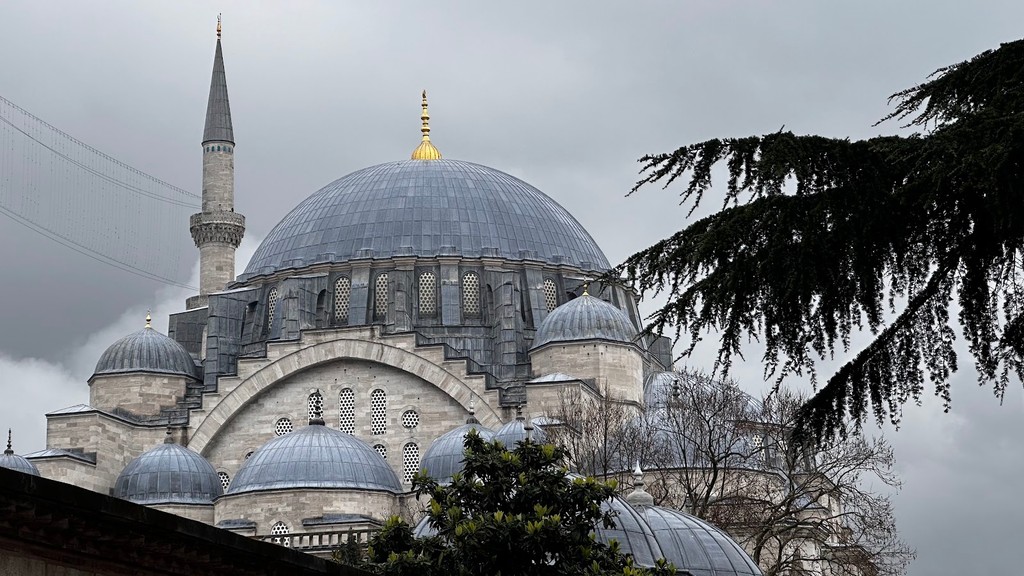
Rustem Pasha Mosque (Source: Google Maps)
The Rustem Pasha Mosque, completed in 1563, is a hidden gem often overshadowed by its more famous counterparts. Designed by the renowned architect Mimar Sinan, the mosque is celebrated for its stunning Iznik tiles that cover the interior and exterior, featuring intricate floral and geometric patterns. The mosque's compact size belies its architectural beauty, with a serene courtyard that provides a peaceful retreat from the bustling city. Its location near the Spice Bazaar makes it a perfect stop for visitors exploring the area. The mosque is an active place of worship, and its tranquil ambiance offers a glimpse into the spiritual life of Istanbul. Rustem Pasha Mosque is a testament to the artistic and architectural achievements of the Ottoman Empire.
Galata Bridge
Conclude your walking tour with a stroll across the Galata Bridge, offering panoramic views of the Golden Horn and a chance to see local fishermen in action.
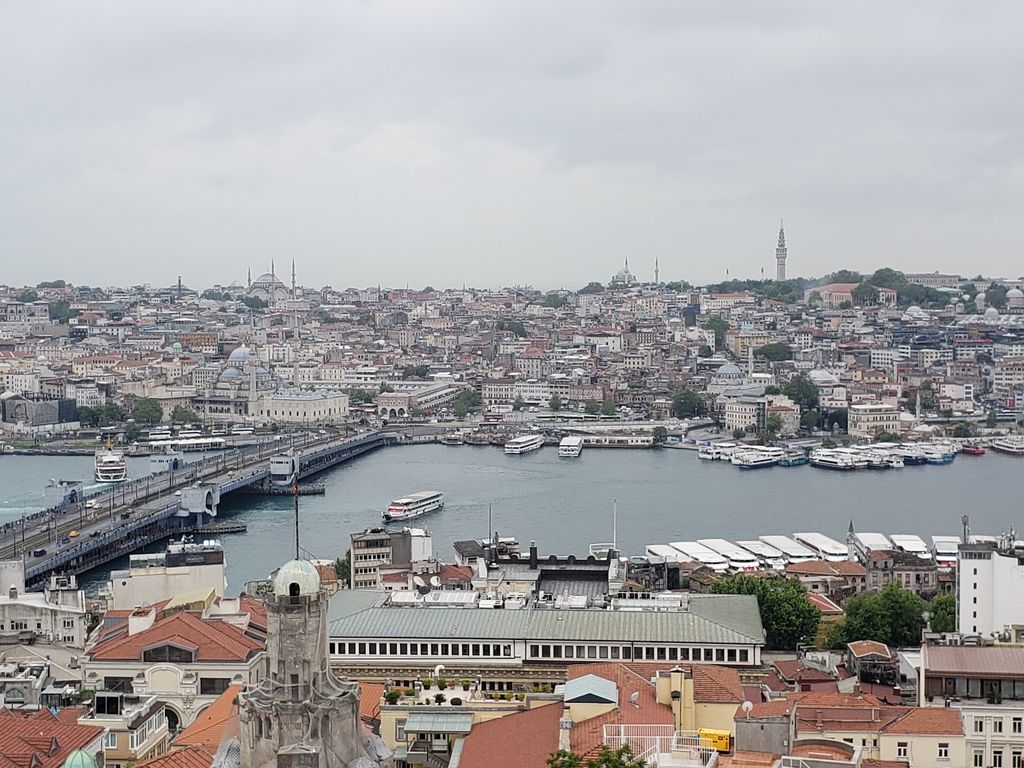
Galata Bridge (Source: Google Maps)
The Galata Bridge, which spans the Golden Horn, is an iconic structure that connects the old city of Istanbul with its modern districts. Originally built in the 6th century, the bridge has undergone several reconstructions over the centuries, with the current version completed in 1994. The bridge is famous for its panoramic views of the city skyline, the Bosphorus, and the historic waterfront. It serves as a popular spot for both locals and tourists, offering a lively atmosphere with fishermen casting their lines from its edges. The lower level of the bridge features restaurants and cafes, making it a perfect place to enjoy a meal while taking in the sights. The Galata Bridge is not just a functional crossing; it is a symbol of Istanbul's rich history and vibrant daily life.

Your travels, your rules.
Create your own Free Walking Tours.
Set your preferences, distances and anything you want to do or see.
Completely free, no payment required.